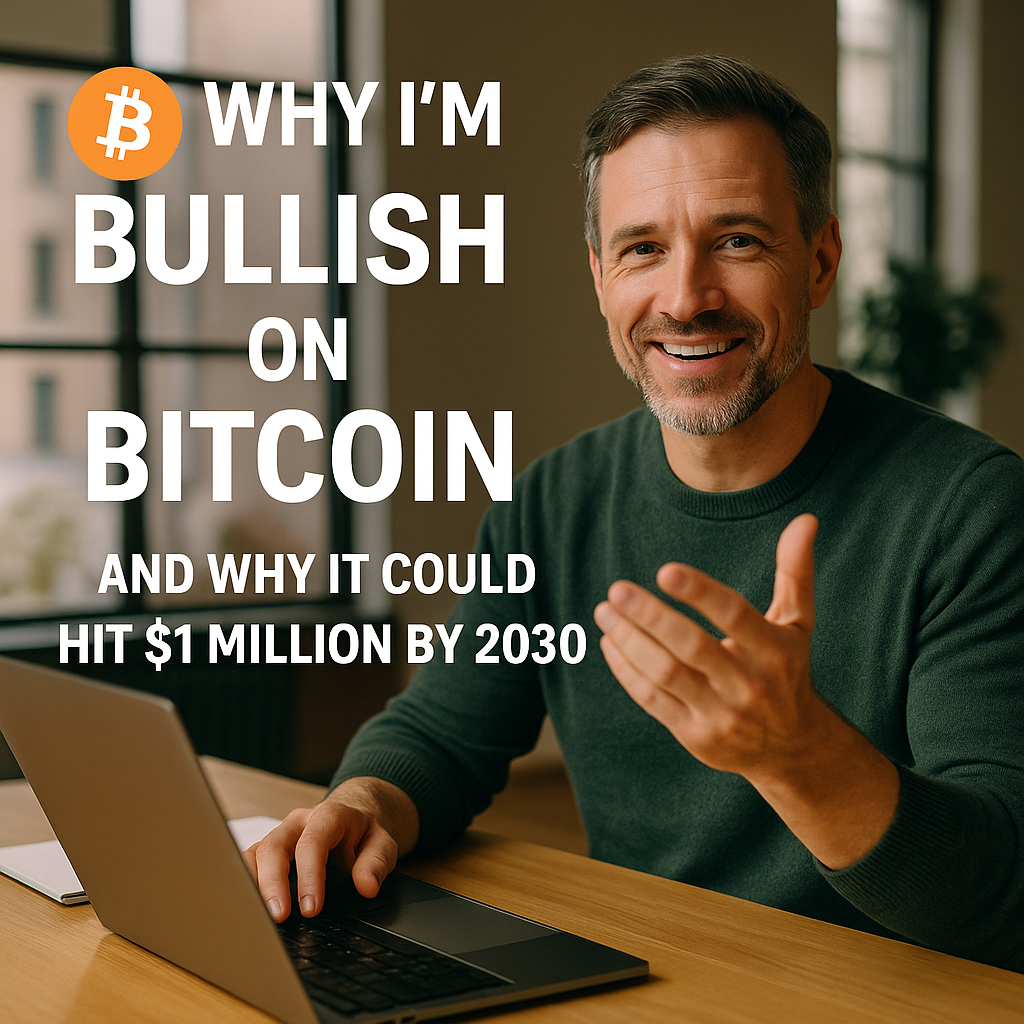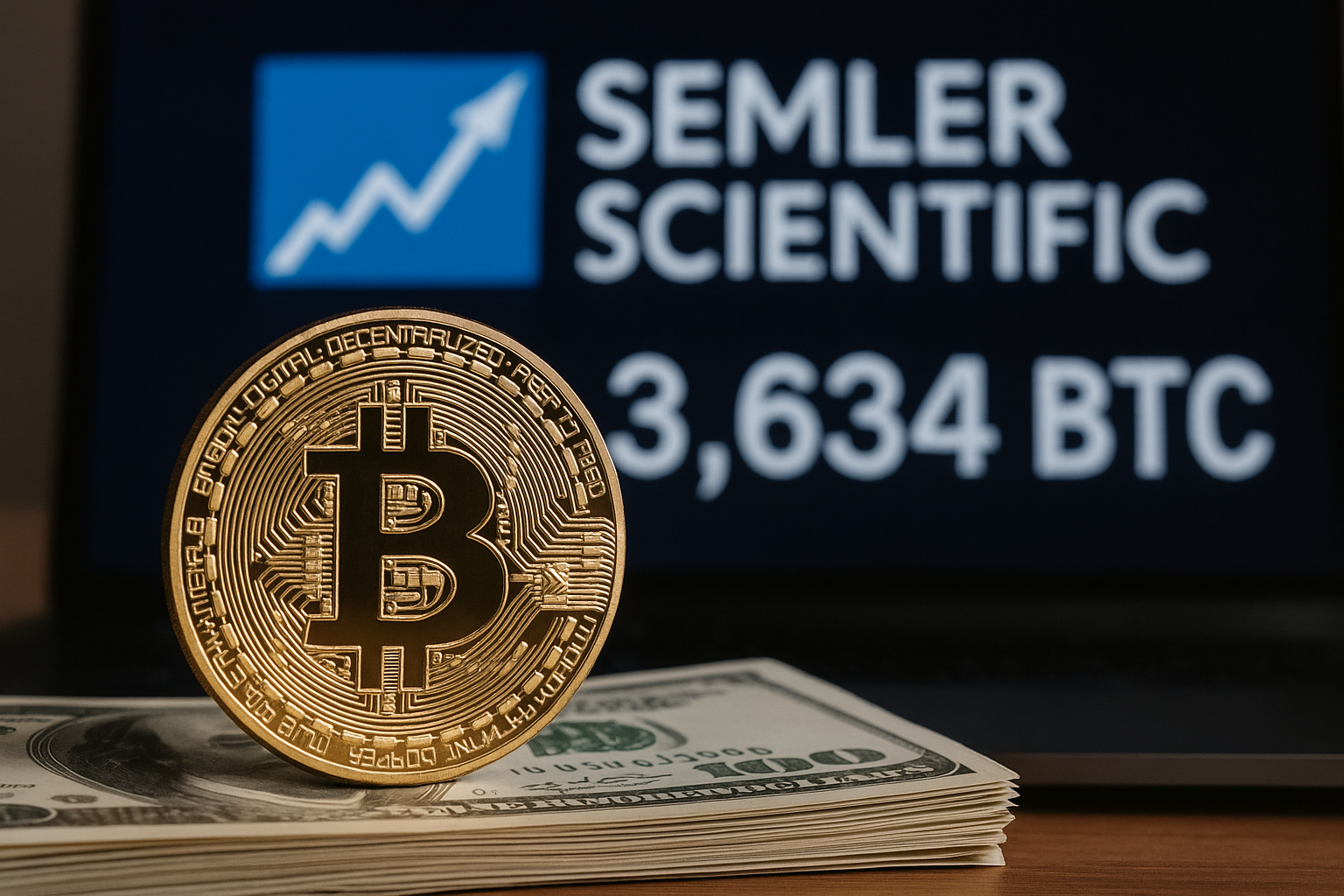A personal take on the current crypto landscape and Bitcoin’s long-term potential
Over the years, I’ve spent countless hours researching financial markets, economic cycles, and – most importantly – Bitcoin. And today, in 2025, I can say with strong conviction: we are in the midst of a full-blown bull market. Not just a temporary upswing, but a structural, long-term shift that could reshape how we store and transfer value. In this article, I’ll explain why I believe Bitcoin could reach $1 million by 2030 – and why that’s not a pipe dream, but a rational, data-driven possibility.
1. The Macro Landscape Favors Bitcoin
Global debt levels are at record highs. Governments are printing money to fund growing deficits, and central banks are trapped in a delicate balancing act: fighting inflation without crashing the economy. In such an uncertain environment, Bitcoin is emerging as a credible hedge – a digital, scarce, borderless store of value.
We’re seeing institutional players – from BlackRock to sovereign wealth funds – quietly and steadily increasing their exposure to Bitcoin. This structural demand shift is not just a narrative; it’s a foundation for long-term growth.
2. The Halving Cycle Is Fueling the Bull Market
Every Bitcoin halving has historically triggered a powerful bull run, with a delay of several months. The most recent halving in April 2024 once again cut the block reward in half, reducing the supply of new BTC entering the market.
If past cycles (2012, 2016, 2020) are any indication, we are now entering the most explosive phase of the cycle – one that typically peaks 12–18 months after the halving. The stars are aligning for another major leg up in 2025 and 2026 – possibly well beyond $100,000 as a stepping stone toward the million mark.
3. Bitcoin Is Becoming the Digital Backbone of Finance
Bitcoin is no longer just a speculative asset. It’s gradually being integrated into the global financial system. Regulatory clarity is improving. Bitcoin ETFs are live. Corporations are adding BTC to their balance sheets as a hedge against fiat debasement.
At the same time, technological upgrades like the Lightning Network are making Bitcoin faster, cheaper, and more practical for everyday use. We’re not just watching an asset appreciate – we’re watching an open, decentralized financial protocol mature.
4. A Generational Shift in Wealth and Mindset
Younger generations – Millennials and Gen Z – are digital natives. They don’t trust traditional financial institutions the way older generations did. And they’re more likely to own crypto than stocks or gold.
As trillions of dollars in wealth transfer to these younger cohorts over the next decade, their investment preferences will shape the markets. Bitcoin isn’t just a financial asset to them – it’s a movement, a belief system, and in many ways, a cultural shift.
5. Why $1 Million Is Not Crazy – It’s Possible
Let’s break it down.
- At $1 million per BTC, Bitcoin’s market cap would be around $21 trillion.
For perspective: the global gold market is valued between $13–15 trillion, and gold lacks Bitcoin’s technological utility. - Inflation-adjusted perspective: A million dollars in 2030 won’t have the same purchasing power as it does today. In real terms, the leap isn’t as extreme as it sounds.
- Network effects: The more users, holders, and institutions onboard, the more exponentially valuable the network becomes (Metcalfe’s Law in action).
- Institutional adoption: Even a modest percentage of global bonds, pensions, and treasuries flowing into Bitcoin would dramatically push up the price.
In short: A $1 million Bitcoin isn’t about hype. It’s about math, macro trends, and market evolution.
Conclusion: The Bull Market Is Real – and We’re Early
Bitcoin isn’t just a passing trend. It’s one of the most revolutionary technologies of our time. The current bull market is the result of deep, long-term fundamentals – not mere speculation. And we’re still early. I genuinely believe that Bitcoin could hit $1 million by 2030, not because of blind optimism, but because the conditions for it are falling into place.
Of course, there are risks – regulatory crackdowns, technological threats, market volatility. But zooming out, one thing becomes clear: we are living through a once-in-a-generation monetary shift. And Bitcoin is at the very center of it.
Disclaimer: This is not financial advice. It reflects my personal views and analysis. Everyone should do their own research and make informed decisions.




